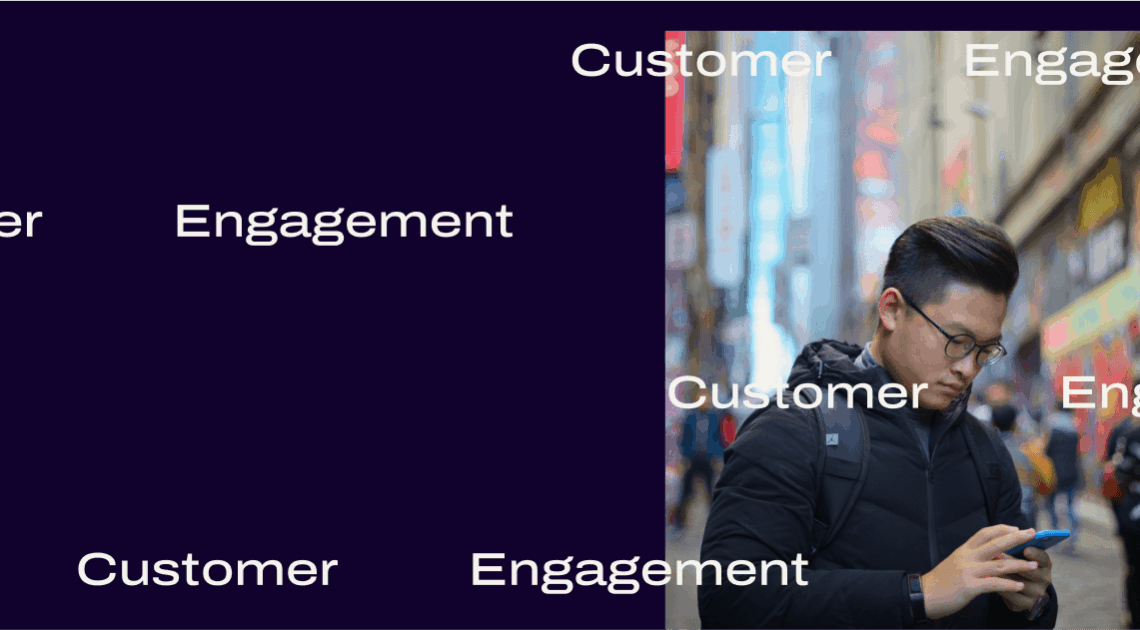
People spend one third of their waking hours going through applications, whether they are ordering pizza on a rainy night, brushing up on a language before their next trip, or seeking for a new winter coat. Despite the fact that there are millions of apps available on Google Play and the App Store, on average every second app is removed within the first month after downloading.
Given these figures, it should come as no surprise that developers of mobile apps are having a harder time retaining the interest of their customers. One of the biggest problems facing the mobile app market today is dealing with low engagement rates. The full customer experience can be covered by a variety of tactics and channels, but user engagement is one of the best ways to keep users interested.
You can identify which users are most likely to respond to your calls to action and which users are losing interest at particular points and require more targeted messaging to entice them to return by monitoring the appropriate data.
(DAU/MAU) Daily and monthly active users
These engagement metrics track user activity over time, namely the frequency of interaction. DAU and MAU count the users who interact with your
Rate of stickiness
What does having a sticky app entail, speaking about stickiness? An app is sticky if users believe they must have it in their daily life. A sticky app has a strong user base, minimal user attrition, and high engagement. Stickiness, which emphasises the transactional value of your product, is typically brought on by a distinctive and simple user experience. It’s simple and easy to order meals through a delivery app or pay bills
For instance, if your product has 500 monthly active users and 50 of them utilise it every day, then its stickiness is 10%. According to Sequoia Capital, the average DAU/MAU is between 10% and 20%, and only a small number of businesses reach 50%.
You can get a sense of how valuable your app is to consumers by monitoring this metric. It gives product teams a good notion of which products could need iterating and can aid in the prediction of prospective income over time.
Make your app more stickable
According to UXCam’s experience, sticky apps all share the following characteristics:
Fairness and FOMO
Data-driven
unified style
finding solutions
Regular user communication can assist you improve your stickiness ratio and give users a sense of inclusion and FOMO. Consider what encourages consumers to return, whether it be via push alerts, emails,
Should you aim for longer or shorter sessions on average?
Despite the fact that on the surface it could appear that the longer the session, the better, it really relies on the kind of product you’re offering:
In order to monetize their apps and demonstrate engaging user experiences, social networking and entertainment apps aim to lengthen their average session duration;
However, analytics apps could interpret extended session lengths as a sign of a poor user interface or perplexing customer paths.
Most active/frequently visited screens
You will have a better understanding of navigation flow and user experience if you are aware of the most and least popular sections of your app (other than the homepage). It will be more efficient to provide those particular users information about a price drop or new products within that category via an in-app message or a push notification if you know that they
Drop-offs
With your engagement plan, it can be helpful to understand where people are leaving off. You can send them messages to entice them back if you see that users are leaving the app at a specific point. Create funnels for your path of conversion so you can see your drop-offs.
You may learn how many of your users progress from one step to another by building conversion funnels. You can send those users an email reminding them to finish onboarding if you notice that there is a high percentage of drop-offs between “app launch” and “sign in.” You may dig further into conversion metrics to learn about additional UI problems your users are having.
Enhance your app’s user engagement numbers by using various sorts of messaging
You may be wondering how to improve those data now that you are aware of the metrics to monitor in order to guide your user engagement strategy. App messaging may be useful.
When messages are delivered at the correct time to the right audience, they can persuade users to open your app and take the desired action, such as buying that pair of boots they’ve had their eye on or adding a picture of their dog to a dog walking app.
Let’s examine several various messaging formats in more detail and when they should be used:
App-based messaging
When the app is open, in-app communications appear as static banners or interactive pop-up windows. In-app messaging aims to increase user engagement and retention among those who are already using the app often. In the following situations, in-app communications are the most successful:
You can utilise in-app messages during onboarding to explain to users the steps they need to follow to fully set up their accounts, perform their first activation action, and continue using your app.
Promotions: Any ongoing specials or promotions can be announced via in-app messaging. You can notify customers that a product they have previously “favorited” is currently on sale or point them to a specific product category page where all goods are discounted from an individual in-app message.
In-app messaging can be used to announce new features. By doing so, you can promote feature adoption rather than just user engagement. Perhaps you have alleviated a common customer complaint, and you want to draw attention to that in-app. In-app messaging can be sent directly at beta users of some apps
Using push notifications
The best way to get people to open an app again when they don’t have it open is through push notifications. Use push notifications to increase user engagement in the following situations:
Reward clients for their loyalty and prior participation by offering them exclusive price reductions on certain products.
Reminders can be utilised in communication with users starting on Day 1 to let them know that a step in the registration or onboarding process is still unfinished. Reminders might prompt users to complete their purchase, upgrade, or just return to a pending action in the app later in the user journey.
Push notifications can be used to reward progress as part of a gamification strategy. The most well-known instance is Duolingo, which prompts users.
Let analytics for user engagement direct your communication approach.
When preparing your app message strategy, it’s critical to evaluate your user engagement metrics in order to appropriately target segmented individuals. Without segmentation, you’ll either have to send push notifications and in-app messages to every user who is currently active or you’ll have to make educated guesses about their demographics and use cases, neither of which will likely help your app expand or lower churn.
Metrics may show you which users are most likely to continue using your app and respond to your prompts as well as which users are losing interest and want more targeted messaging to entice them to return. You may better understand your audience’s motivations and actions by understanding engagement numbers.
